Surfing
Cold waters can’t keep surfers at bay
Surfing gets technical when the weather turns chilly
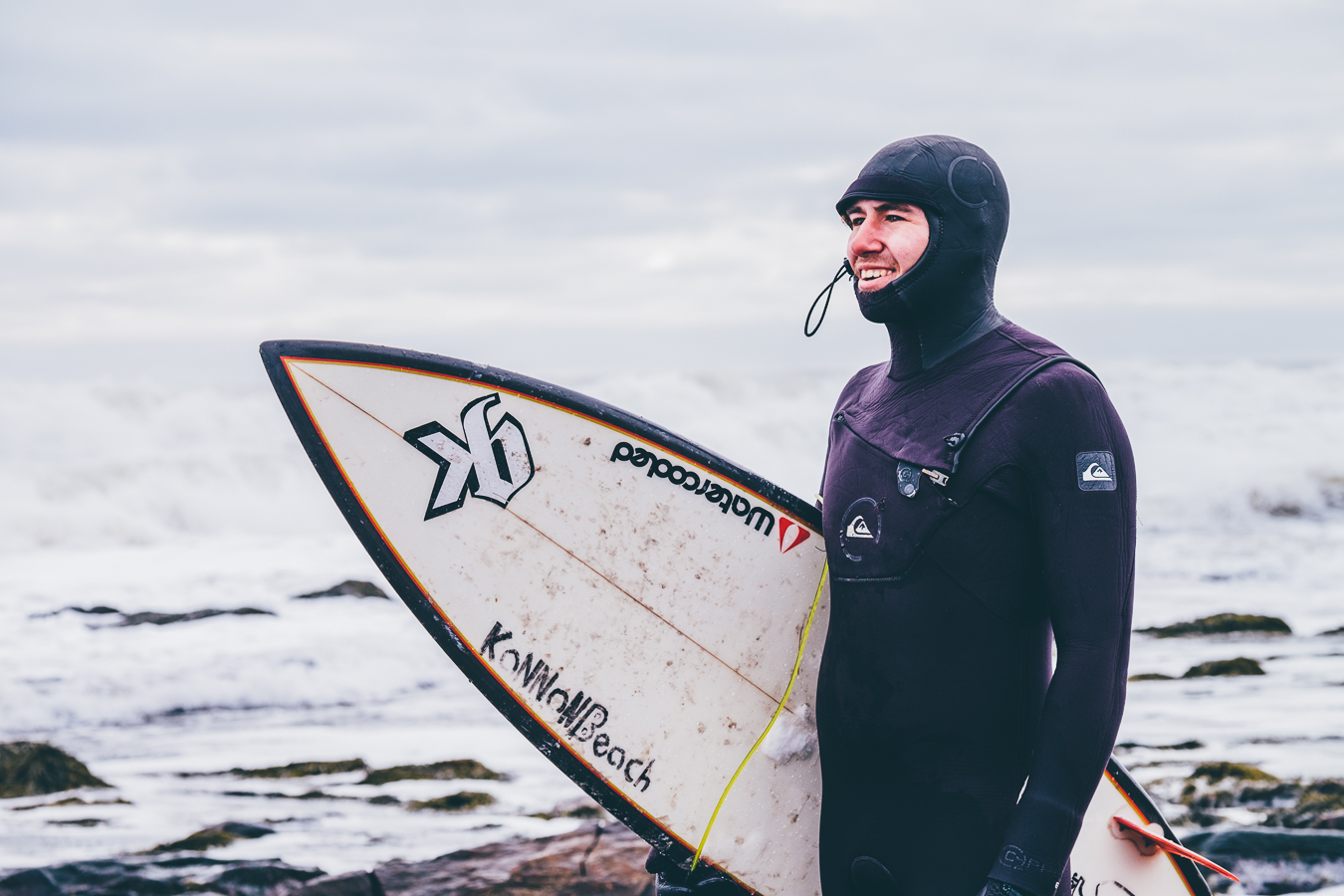
caption
It’s 11 a.m. on Tuesday morning. It’s -5 C and there’s 40 cm of snow on the ground. People are clearing their driveways and school is cancelled.
It’s the kind of day where you’d be hard-pressed to drag most people away from Netflix. Meanwhile, Craig Colson is getting ready to jump into the ocean.

caption
Craig Colson is suited up and ready to paddle into the Atlantic Ocean.He lives in the perfect spot. Originally from nearby Mineville, he’s now based out of a house out on Cow Bay Road that looks onto Backyards — one of the surf spots along the highway. He’s been surfing for eight years.
“I got started through a church camp, believe it or not. It was called Worship on the Waves and a friend of mine had started it… I’ve been participating with it as an instructor ever since,” says Colson.
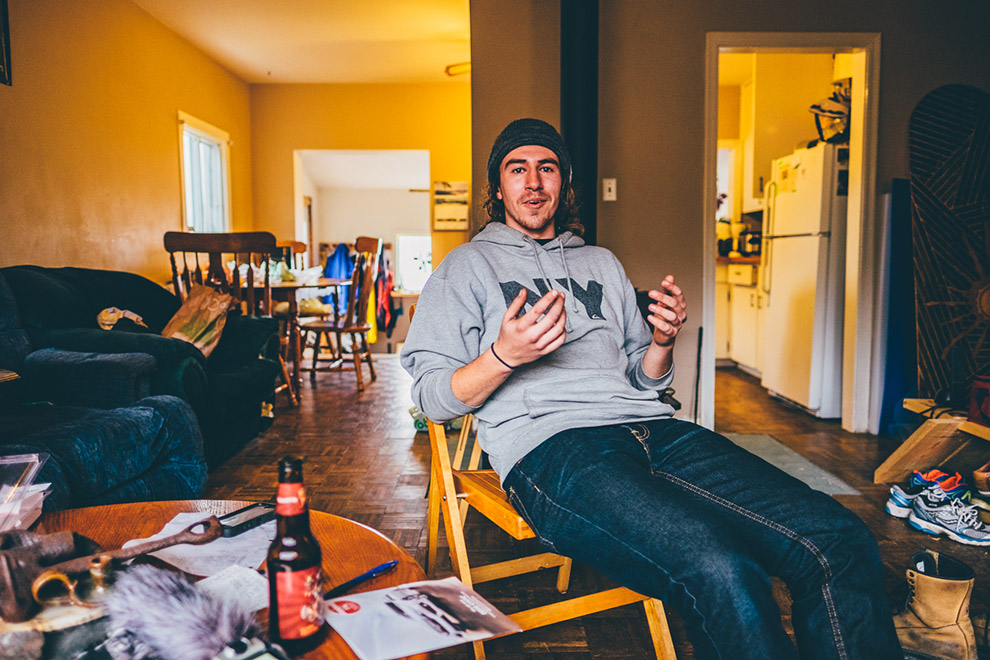
caption
Colson in his Cow Bay home. He’s describing the shape of a wave. Any minute another surfer could home through the door.His house is a surfing hub. When the waves are good, other surfers come by to see what’s going on and deliberate as to where they should take their boards. Friends Keith Marble and Matt Davidson show up in the morning and they decide to try and surf at Minutes and Moose beaches.
[idealimageslider slug=”winter-surfing”]
As Colson is putting on his wetsuit, his neighbour and roommate are using the snow out back to build a snowboard jump.
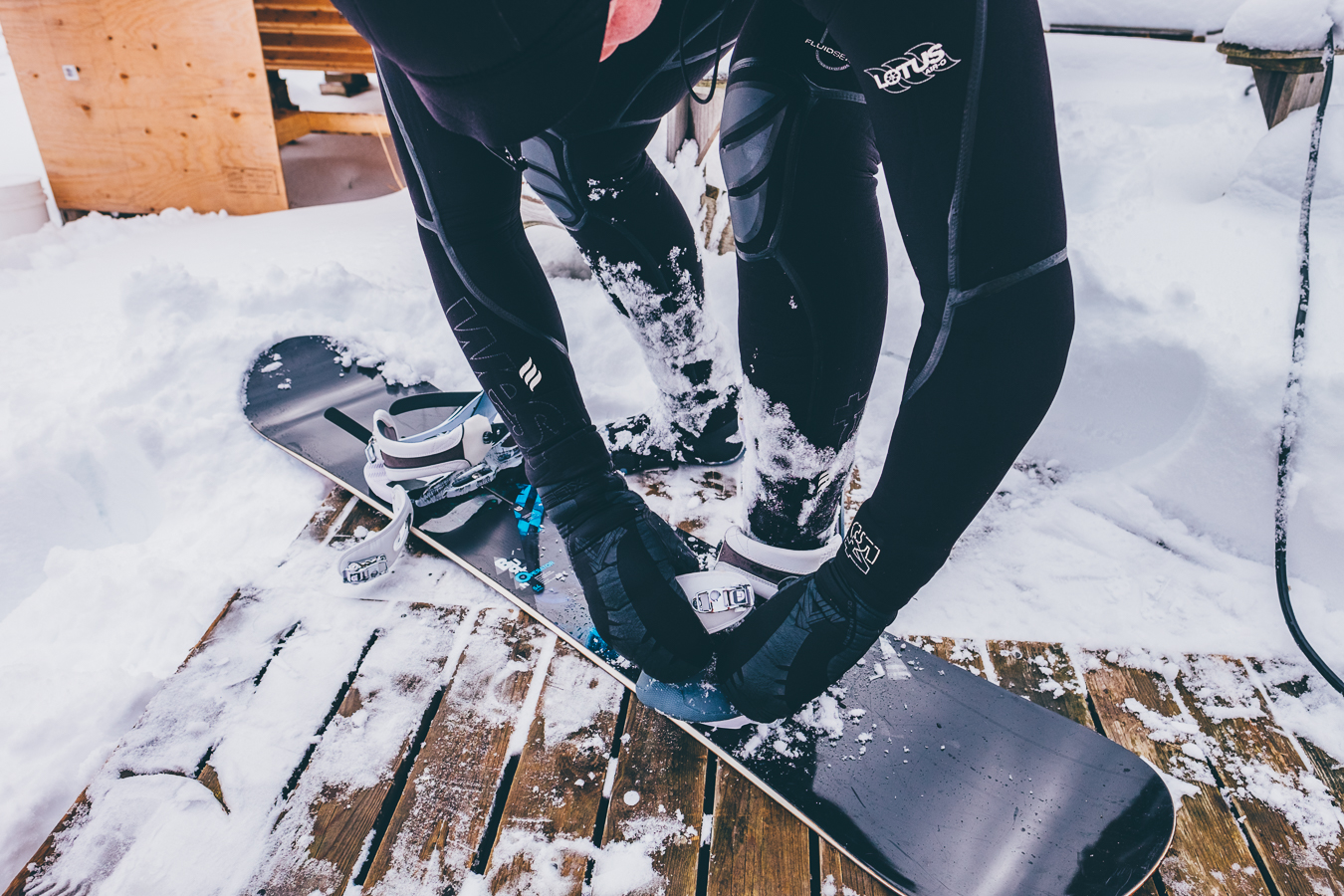
caption
Surf boots into snowboard straps. Time to try the backyard ramp in between sessions.Colson and a lot of his surfing friends are all about board sports. When the waves were flat last weekend, Colson drove out to Martock to shred some powder. When the waves are good he’s out surfing and there’s a neighbourhood bowl where they can also skateboard.
Gear
When the temperature drops, thicker neoprene, boots and gloves help surfers stay warm in the Atlantic waters.
[idealimageslider slug=”winter-surfing-2″]
Colson says over the last few years, the availability of better low-temperature gear has led to more surfers staying on through the winter season.
“Nowadays you see a lot more people are visiting during the winter too,” he says. He sees people from New Brunswick, Quebec and out West.
Wetsuits work by keeping a pocket of water inside the neoprene. Surfers warm up that water with their bodies and it acts as a buffer to keep colder water out.
“Ducking under the waves is still pretty cold though,” says Matt Davidson, a friend of Colson, who’s also out surfing. “It gets you right in the face.”
This is what they’re up against:
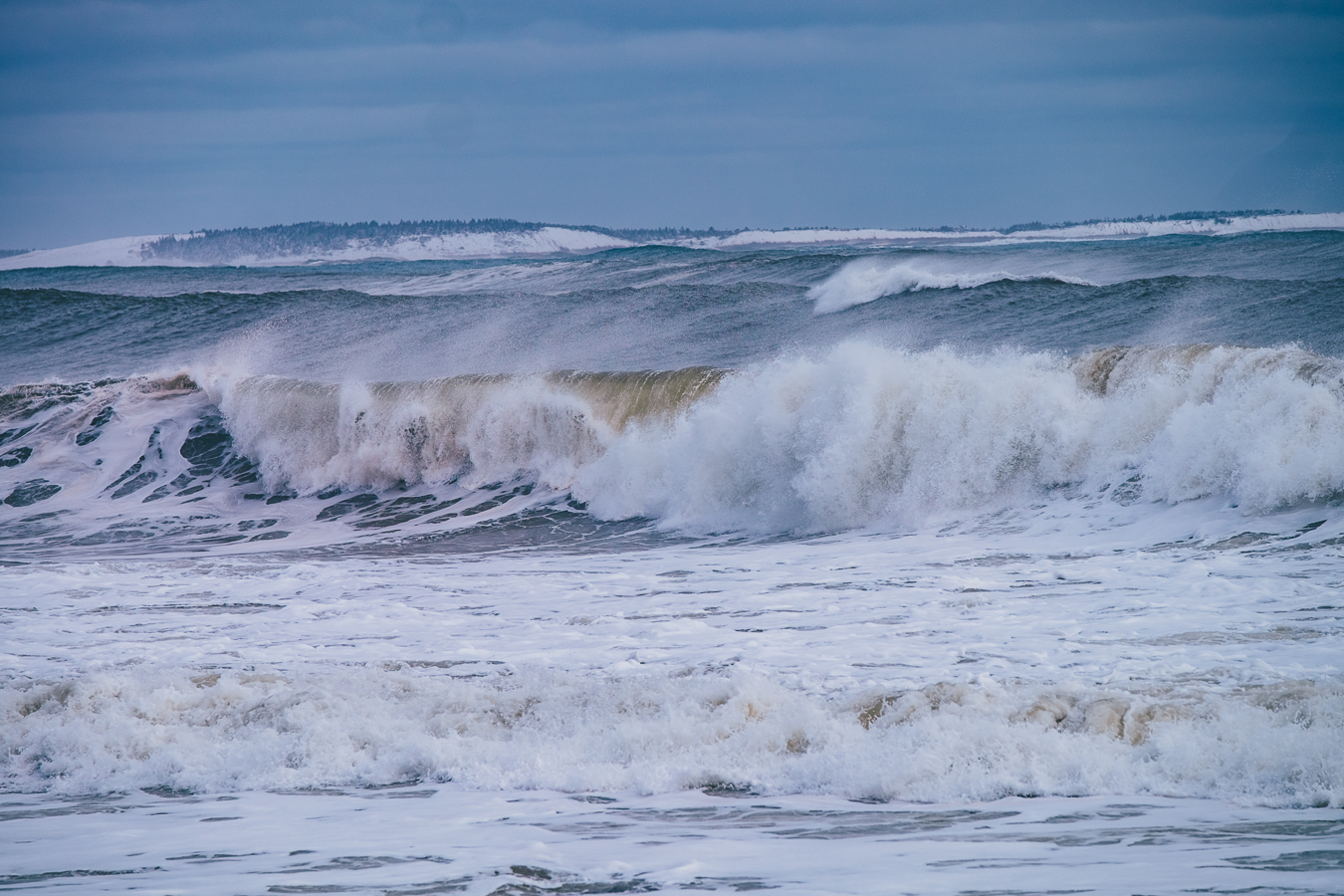
caption
Post-storm surf along Cow Bay Road. Waves are 7-11 feet high.Colson also recommends surf wax made for colder climes.
He brings out a few sticks of the stuff. It smells vaguely of coconuts. This “Made for Canadian waters” wax is made right here in Nova Scotia. You can buy it at the tea house on the hill overlooking Lawrencetown.
[media-credit id=101057 align=”alignnone” width=”1350″]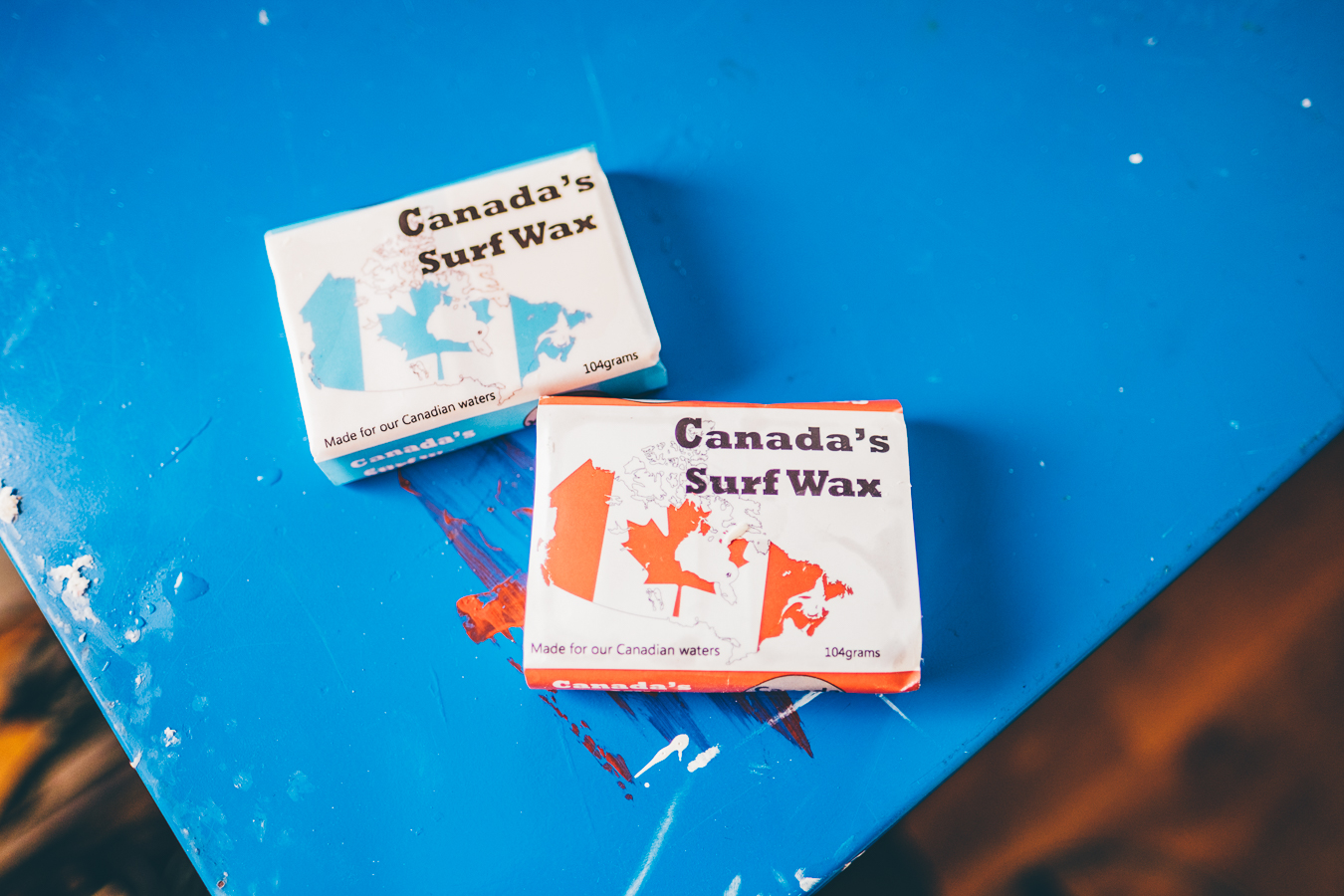 [/media-credit]
[/media-credit]
Timing
You can’t surf if there are no waves. Sites such as Magic Seaweed show wave conditions in Nova Scotia. Or, if you’re Colson you can peek out your backyard to see how the waves are doing.
To get to some of the more hidden beaches and surf spots, you’ll want to make friends with a more experienced surfer.
Colson says there’s not as many surfers around in the winter. But the ones who are out are usually more experienced. They’re serious enough to be out in negative temperatures.
[media-credit id=101057 align=”alignnone” width=”990″]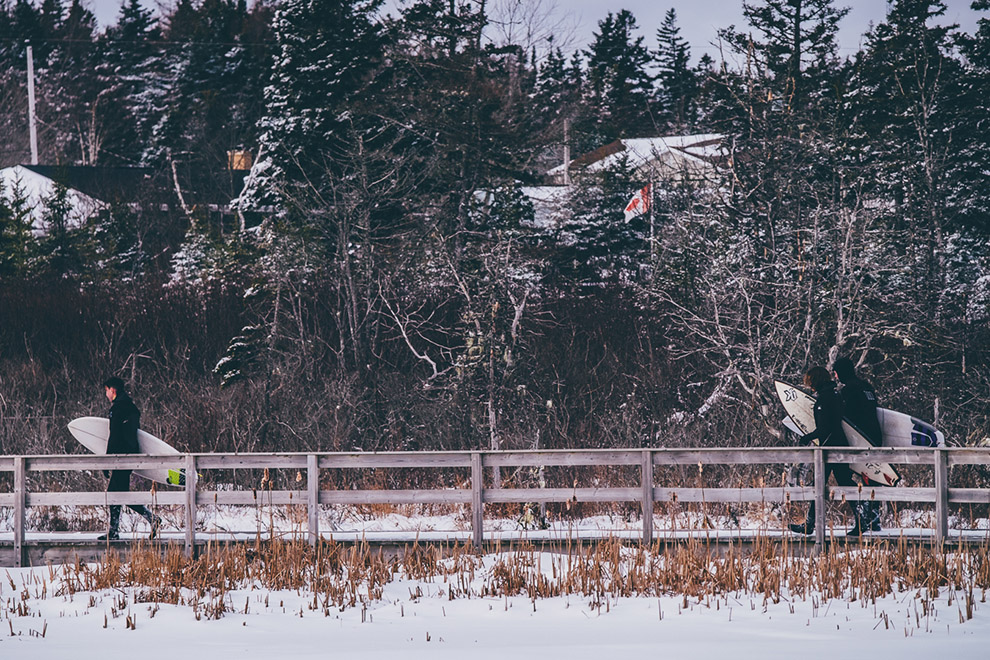 [/media-credit]
[/media-credit]
Once you get out in the water, you’ll have to paddle, paddle, paddle. The waves push surfers in to shore. To get farther out, surfers will duck under the waves to avoid being pushed back in.
There’s also a lot of patience and luck involved. Storm waves can be heavy and unpredictable. It’s hard to catch a wave if you can’t tell where it’s going to break.
[media-credit id=101057 align=”alignnone” width=”1350″]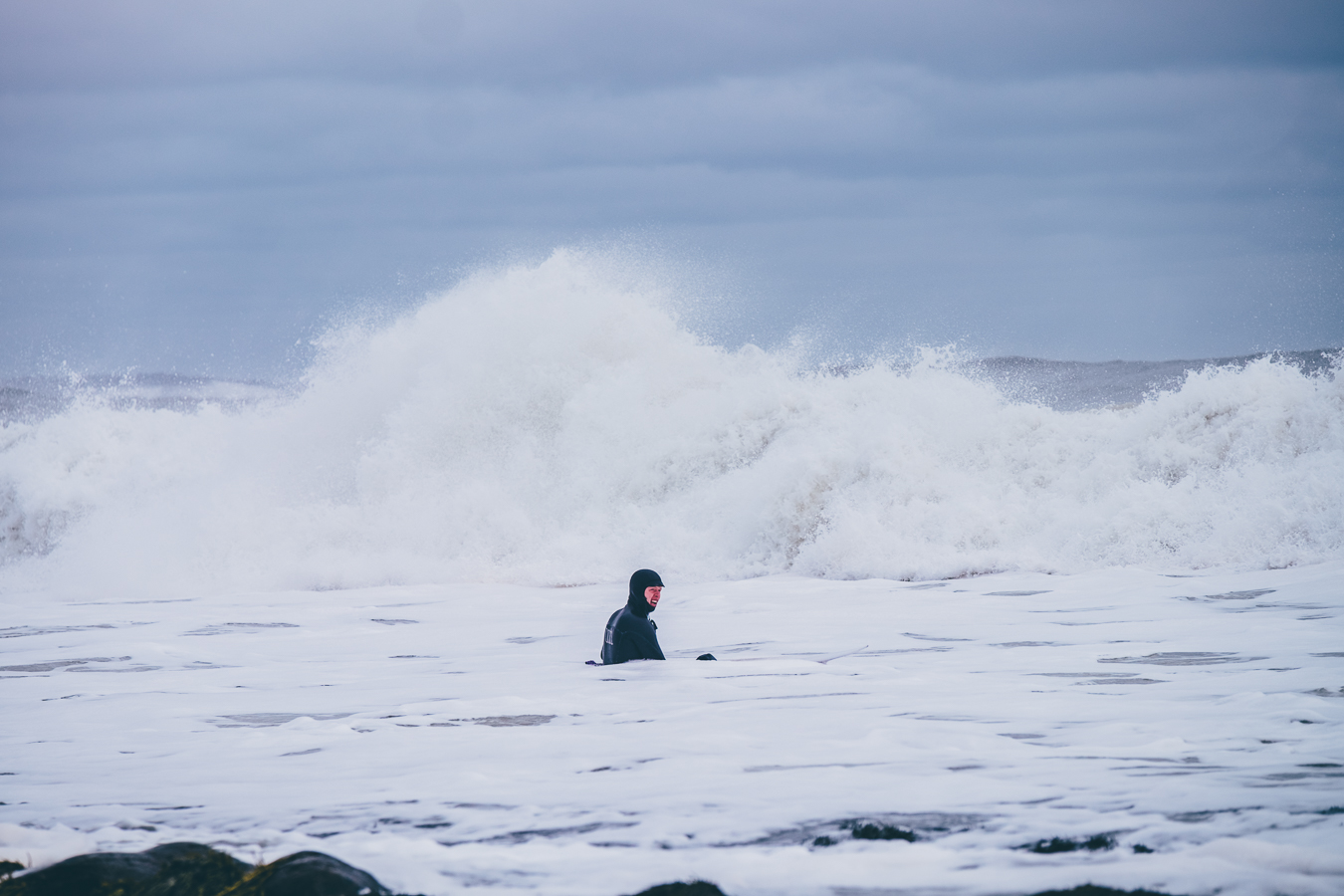 [/media-credit]
[/media-credit]
Winter waves vs. summer waves
What changes the waves is storms. During hurricane season and winter storm season the waves in Nova Scotia are much bigger.
“In the summer the waves are super fun and you have a good time, but the waves in the winter are much better, so the surfing gets more technical,” says Colson.
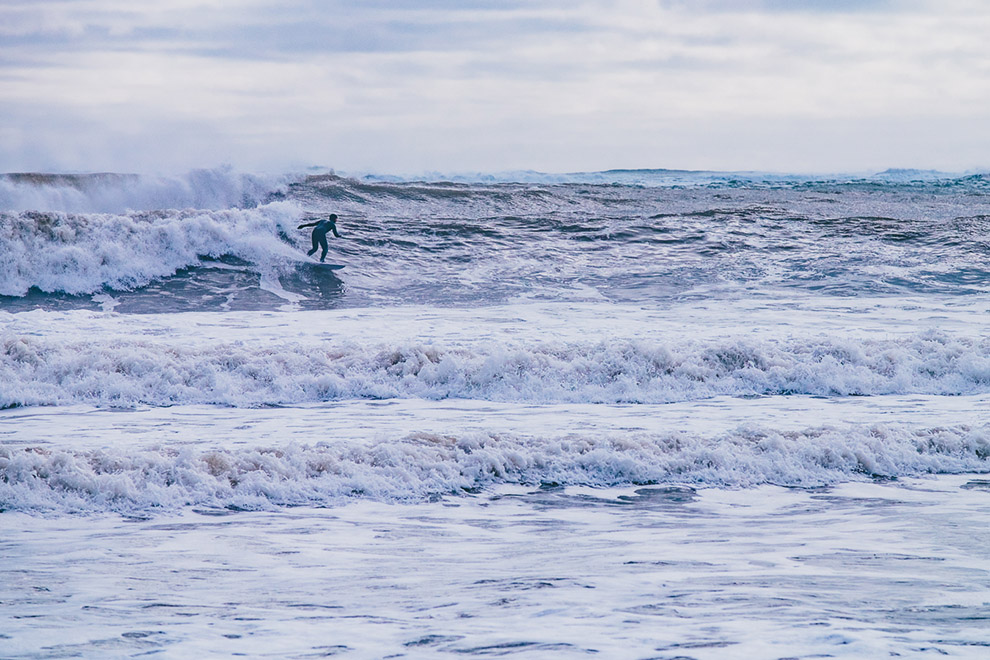
caption
Colson catches a wave at Moose.Waves are different across the province too.
“In Nova Scotia we have a huge variety of waves,” says Colson. “It’s really cool because you can get a favourite wave that nobody else knows about and keep that to yourself — a secret spot.”
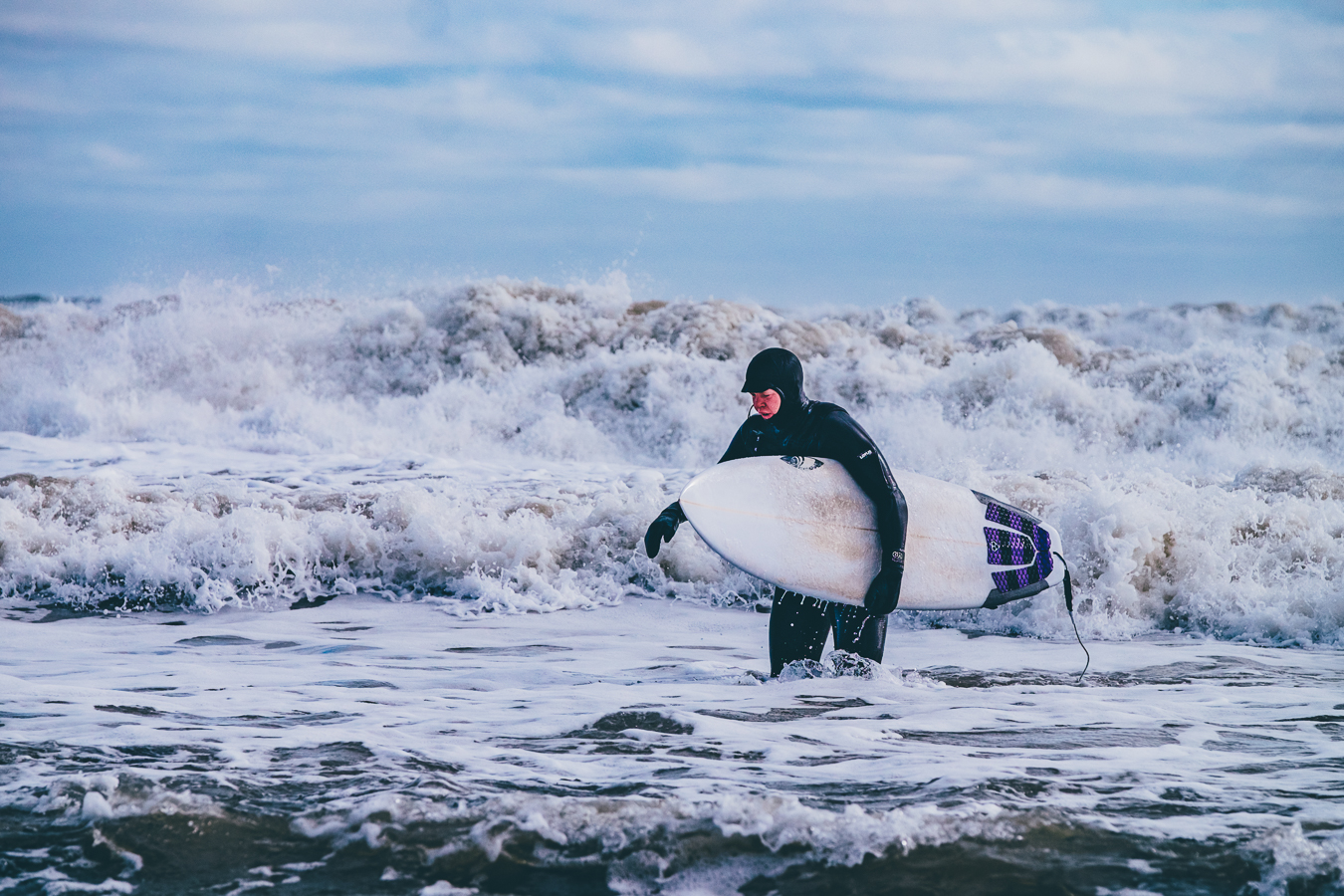
caption
Even with wetsuits, surfers become numb from the cold.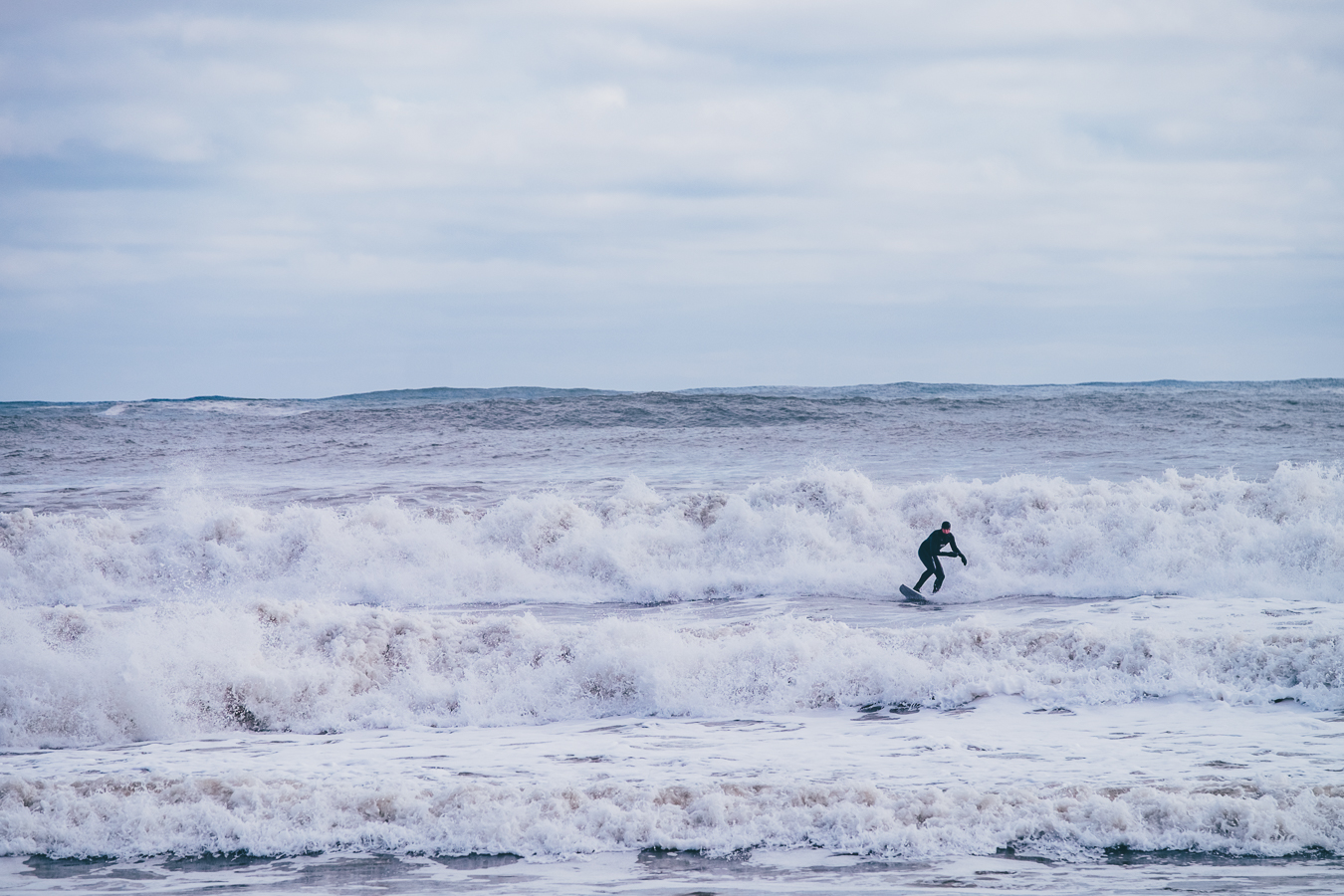
caption
Marble surfs a wave at Moose. The storm waves were breaking unpredictably, making it harder to ‘catch a wave’.The Nova Scotia coastline is full of all these nooks and crannies that waves can sneak into. The varied coastline and inlet shapes lend to a large variety of waves, from “slabby barrels” to “point breaks”.
It all depends on underwater topography, whether it’s sand or rock, how wide the inlet is and whether the tide is high or low.
Danger
With winter surfing comes the most obvious danger: hypothermia. That dangerously low body temperature can be avoided by having the right gear and not staying out in the water for too long.
In the summer, Colson says you can be out on the water for “hours and hours.” In the winter, he says it’s much less. “It depends on the day, but maybe about an hour on average.”
When you come out of the water, try and have a warm beverage as soon as possible. If you have to drive a long way to get home, put a thermos of coffee or tea in your car so it’s waiting for you when you get back.
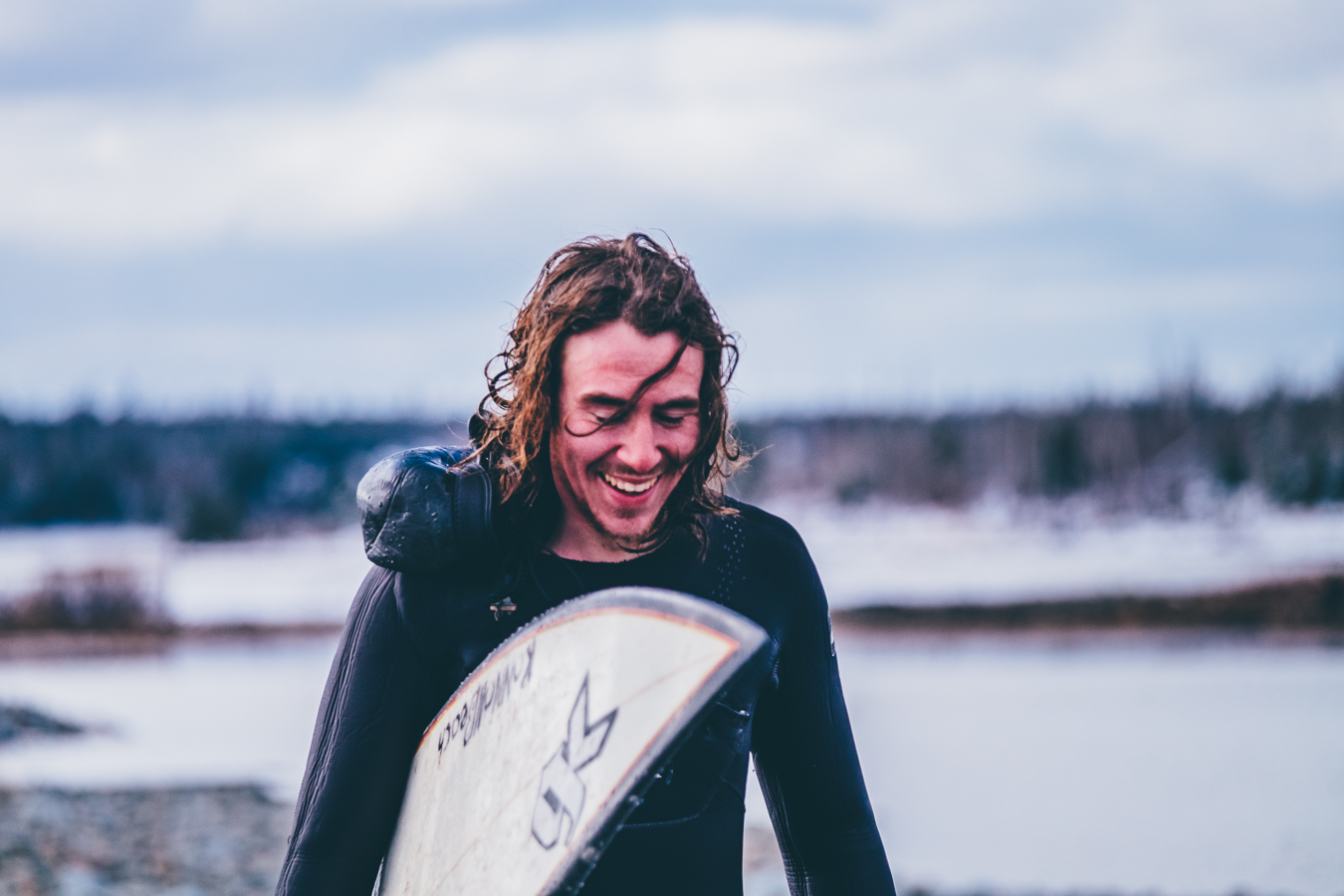
caption
Colson finishes his session and heads back in for a coffee.Another year-round danger: rocks.
A lot of surfing spots along the Eastern Shore aren’t exactly sandy.
“It’s straight-up boulders,” says Colson of the coastline near his house. Next door to Backyards is a surfing spot called ‘Pillows’. So-named because it’s all jagged rock.
[media-credit id=101057 align=”alignnone” width=”1350″]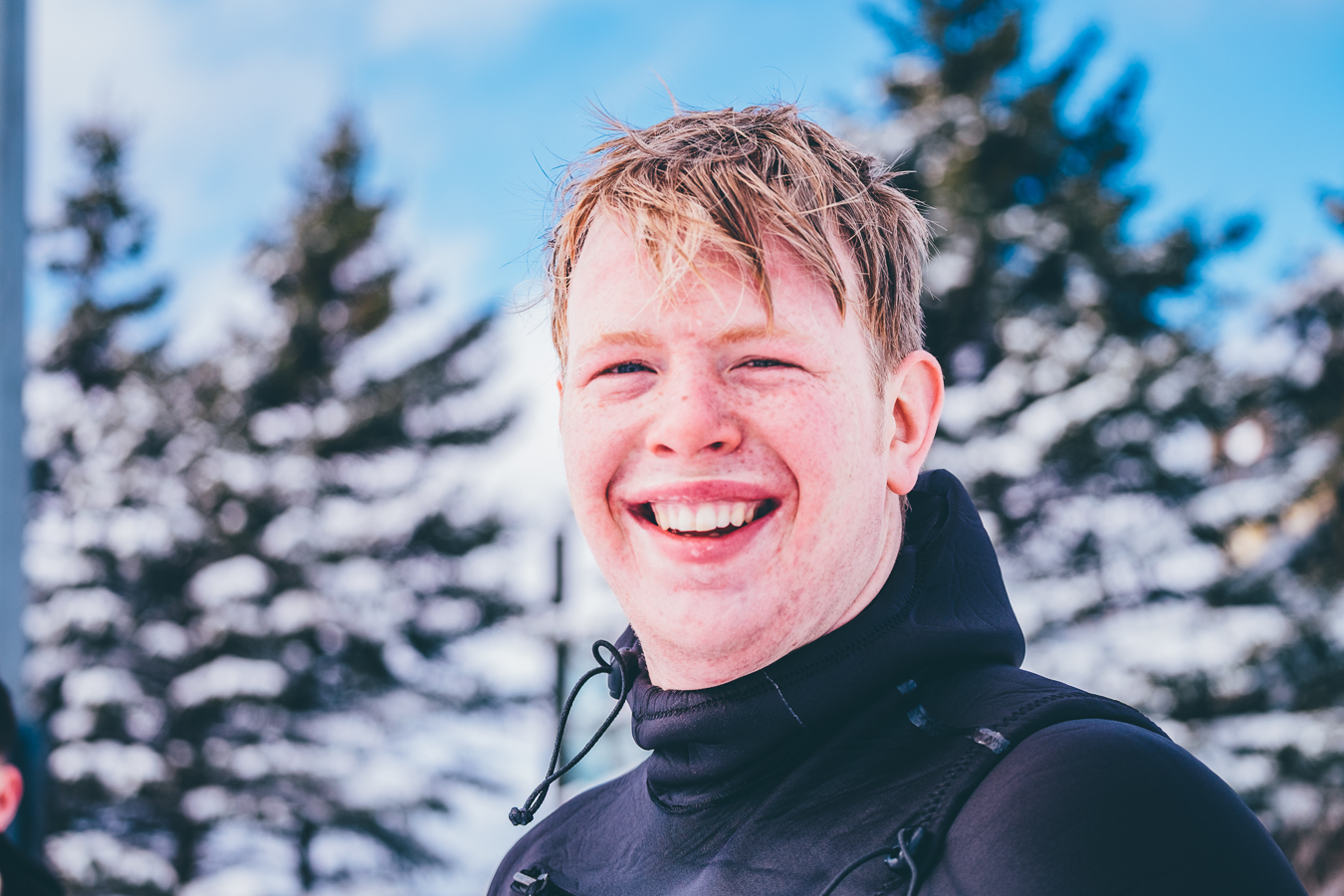 [/media-credit]
[/media-credit]
No matter when or where you’re surfing, stay safe and alert. If you start to feel disoriented or weak, head for the shore and live to surf another day.
Colson says a safe bet is always Lawrencetown. A lot of people start there and it’s relatively sandy. Because it’s one of the most popular waves around, it’s also where you might be able to find a more experienced surfer to show you the ropes.
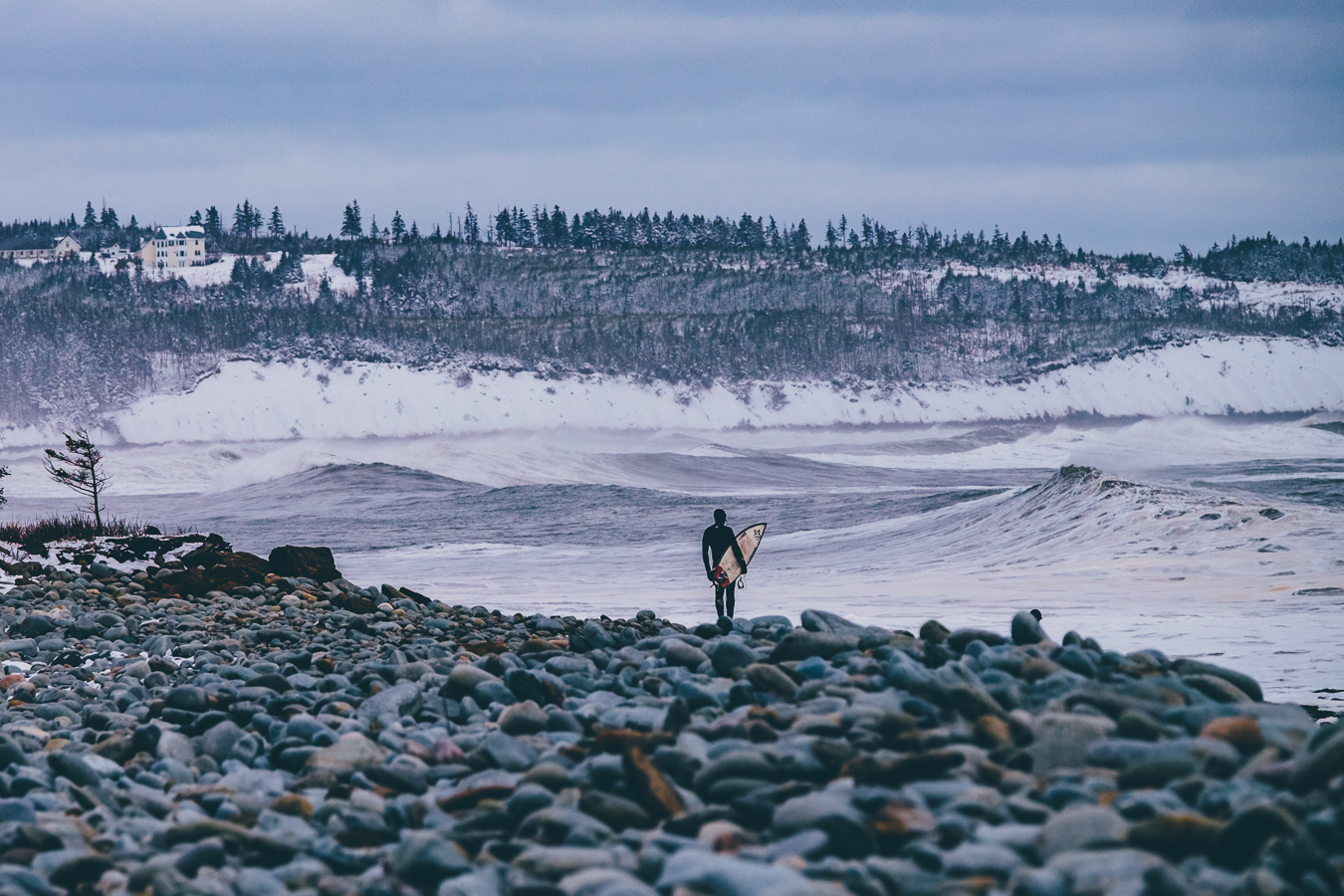
caption
Colson appraises the waves at Minutes.About the author

Mel Hattie
Mel Hattie is a travel journalist from Canada's east coast. She's currently in the MJ New Ventures stream at the University of King's College....
S
Sandra Atwell-Tennyson
M
Mom